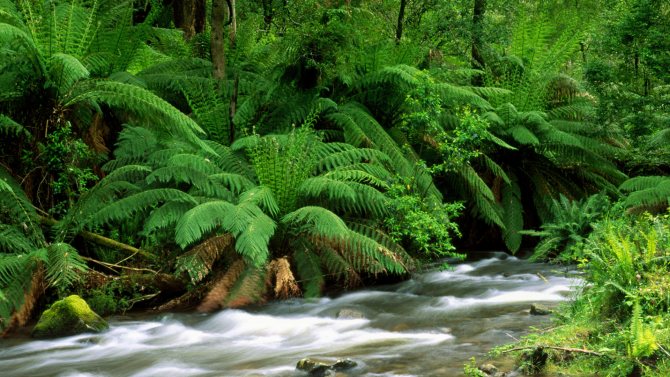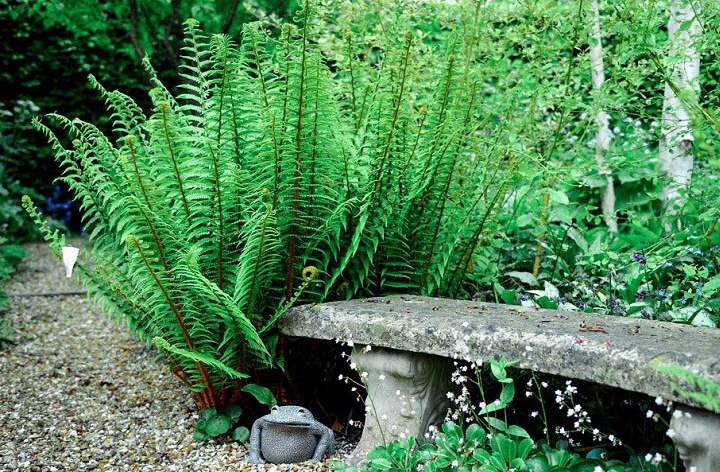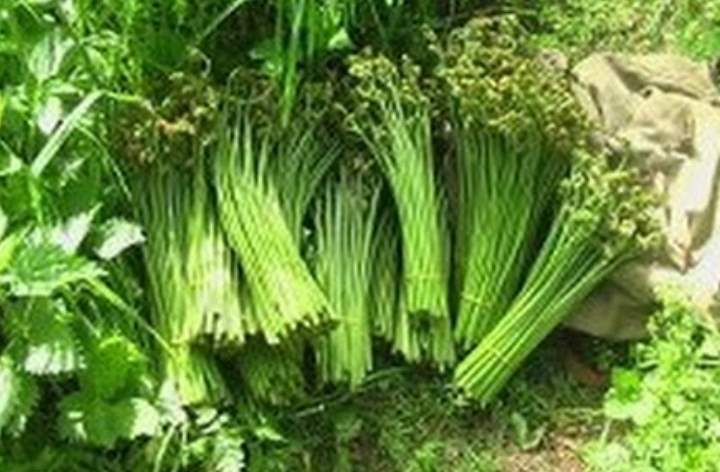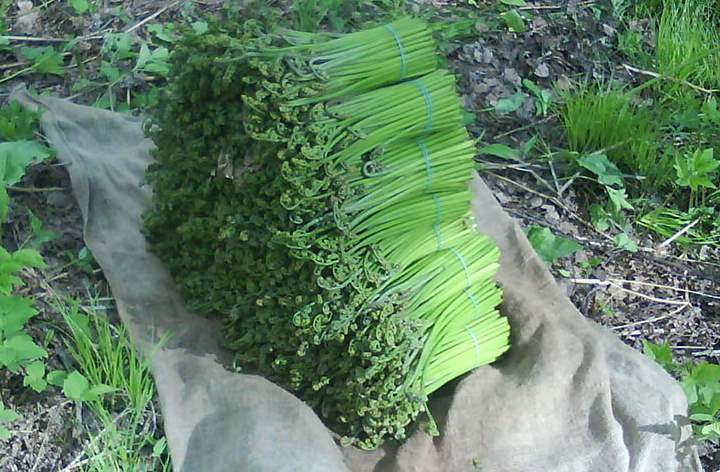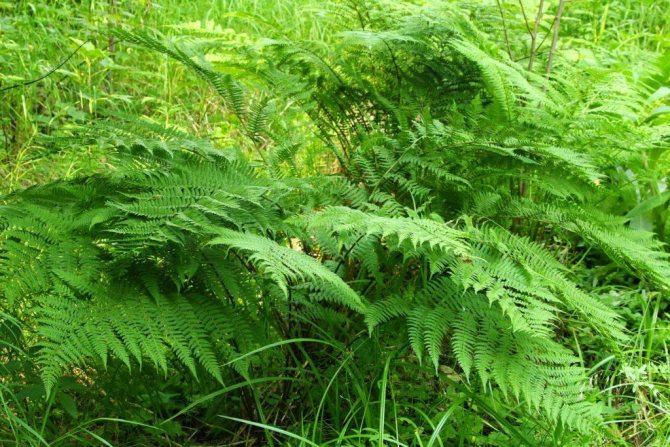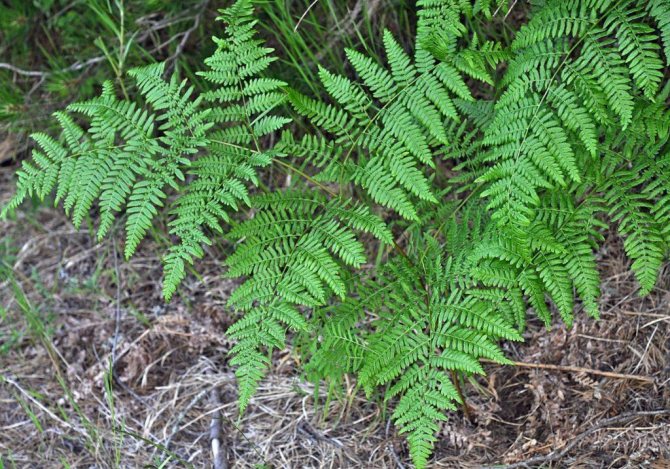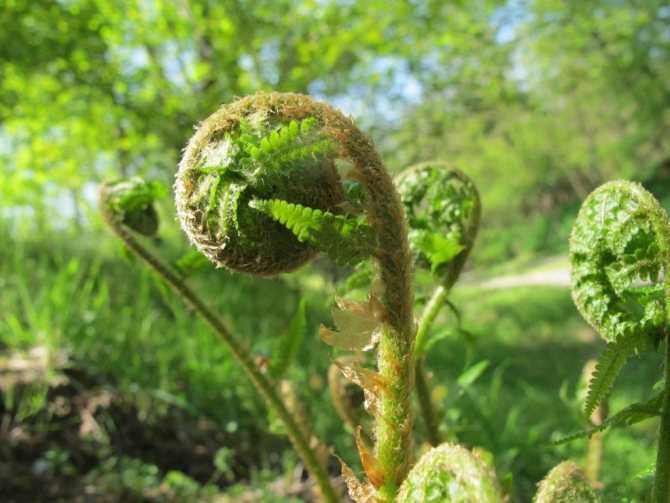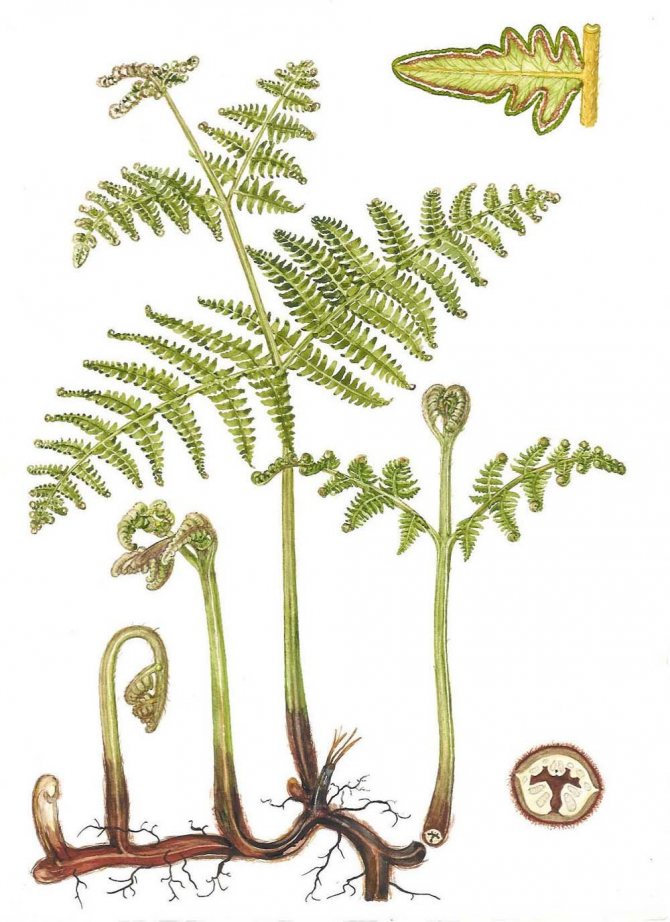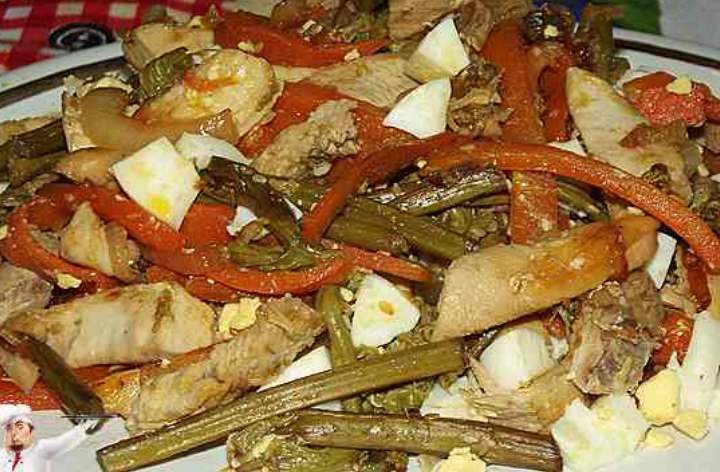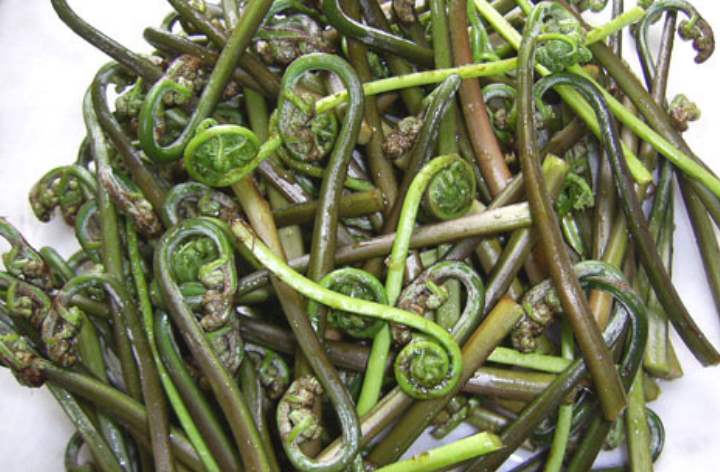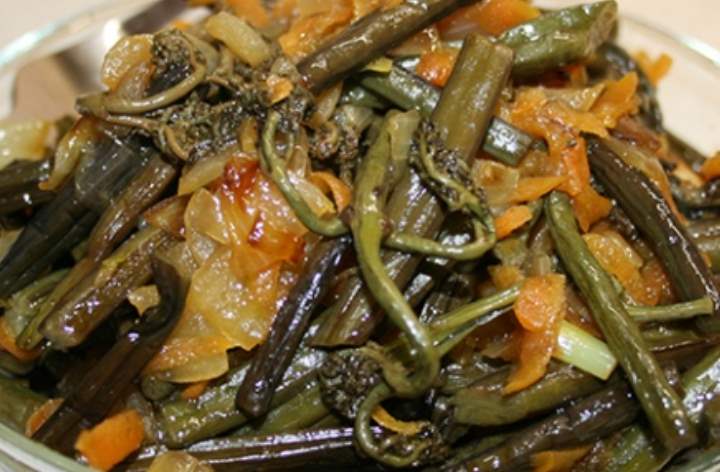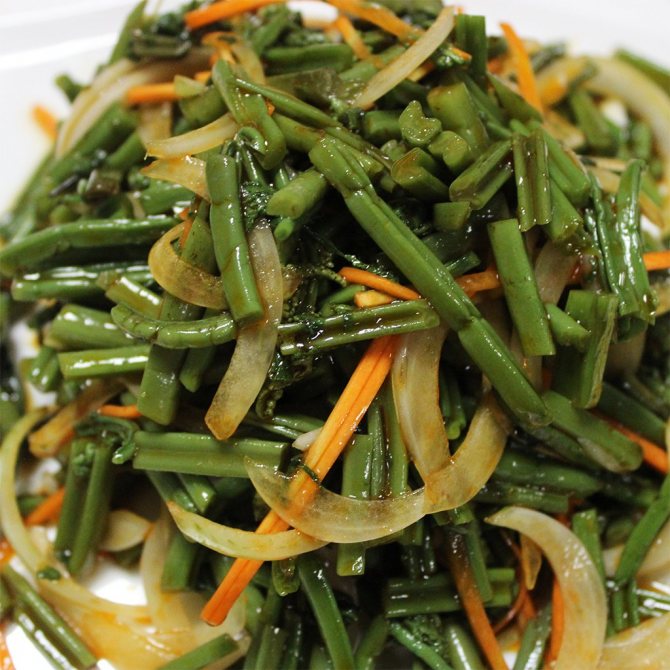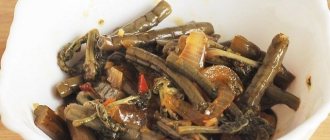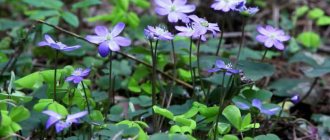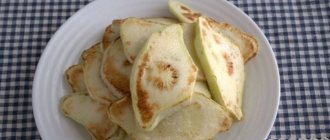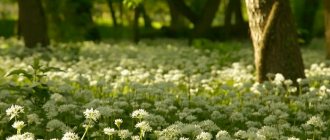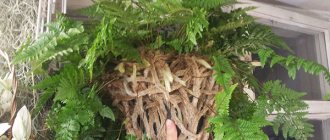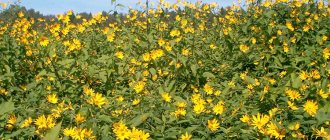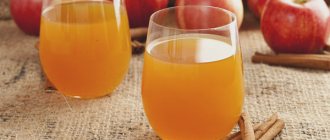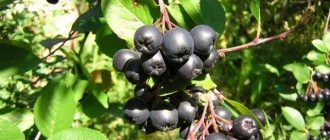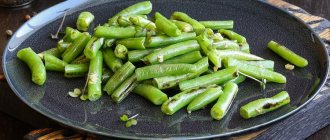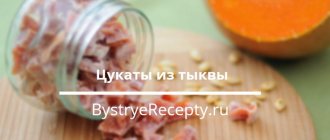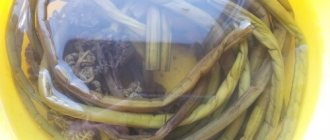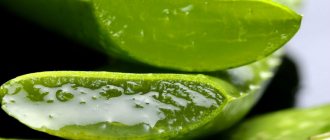May in the Far East is not only the beginning of the sowing / planting season, but also the appearance on local markets of the first popular wild plants - wild garlic and fern. Collectors of these taiga gifts go to the forest, equipped with slightly less equipment than those who go to the zone of chemical pollution. Ticks feast in the taiga at this time. Some of them are encephalitic, so nobody wants to tempt fate. And fern and wild garlic, just the opposite - you want. Because it is as much an integral part of everyday life as honeysuckle and blueberries in summer, and fish, mushrooms, lingonberries, lemongrass and cranberries in autumn. I will tell you about the edible fern, which is available in most of the country, but is used mainly in the Asian part, in this article.
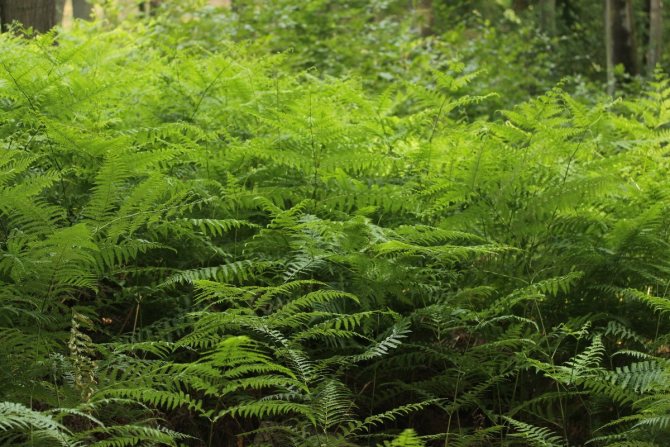
Bracken fern - admire or eat?
Orlyak ordinary: photo, short description of the plant
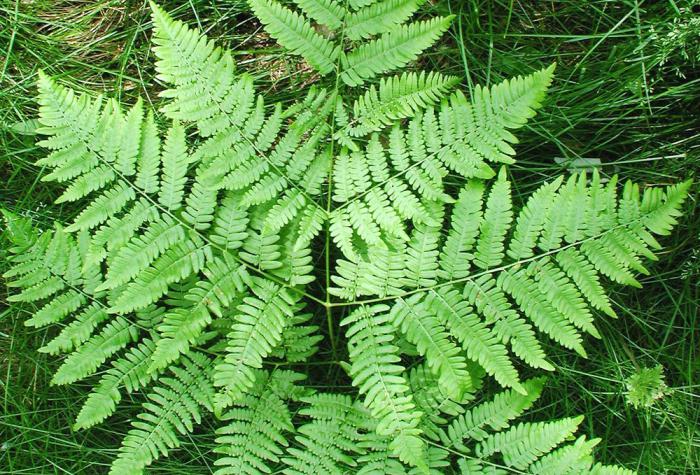

This plant is a perennial herbaceous fern that belongs to the Hypolepis family. Orlyak ordinary, the photo of which is in this article, has the following distinctive features:
- has a strong rhizome;
- reaches a height of 90-100 cm;
- leaves of a plant up to 150 cm wide, dark green, triangular in shape, located singly;
- the edges of the leaves are curved.
Bracken fern grows mainly in forest areas. This plant does not form bushes at all.
What are ferns
Biologists distinguish ferns into a whole division, which includes higher vascular perennial plants. Ferns are unlike other plants in that able to reproduce by spores.
On the back of the fern leaf, brown growths form, in which the spores mature until a certain period. The growths are arranged in such a way that an intricate pattern is formed on the sheet.
Fern to get a continuation of its kind, throws out ripe spores into the surrounding space. If the spore hits a growth-friendly soil, it will germinate, forming a tiny sprout.
The first generation that begins, after germinating from the spore, is called gametophyte. This generation looks like in almost all fern species, like a small heart, consisting of two lobes.
The unusual breeding of the fern is that this miniature process there are germ cells called antheridia and archegonia. When fusion occurs between these cells, the fern grows into the second generation, which is called sporophyte.
The second generation is fully consistent with the idea that everyone is used to remember when the word "fern".
It is this plant that will sow its spores in order to continue breeding ferns on all surfaces where it is possible for such an unpretentious creation of nature.
Indoor fern care at home:
Composition and medicinal properties of bracken fern
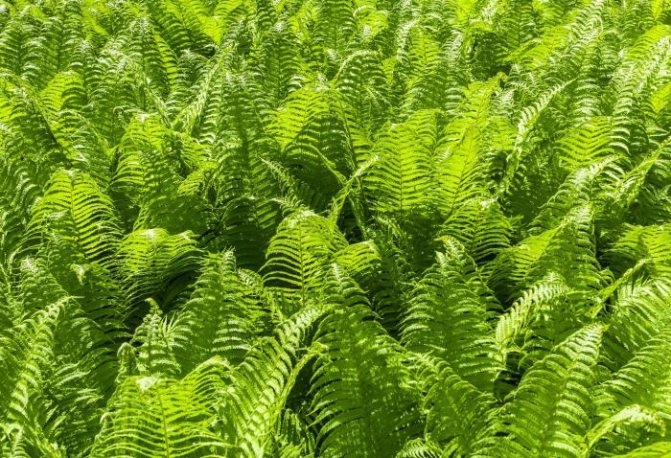

Common bracken contains substances that are very useful for human health:
- catechins (cleanse the body, neutralize free radicals, slow down the aging process);
- flavonoids (soothe nerves, regulate blood pressure, strengthen blood vessels, normalize heart rate);
- phytosterols (regenerate the skin due to an increase in collagen levels);
- fatty oil (excellently relieves inflammation, accelerates the healing process, has anti-carcinogenic properties);
- bitterness (stimulates appetite, normalizes the work of the digestive tract, helps restore energy and strength);
- carotene (removes dangerous toxins, neutralizes free radicals, regulates the process of protein synthesis);
- riboflavin (restores sleep, improves the condition of the organs of vision, soothes the nerves);
- tocopherol (protects the human skin from the harmful effects of ultraviolet rays, regulates lipid metabolism, relieves puffiness);
- nicotinic acid (improves joint mobility, provides all types of metabolism, dilates blood vessels, lowers blood cholesterol levels, increases blood flow, has a beneficial effect on the digestive tract and liver, lowers blood pressure).
Common bracken has the following properties:
- antipyretic;
- sedative;
- anti-inflammatory;
- diuretic;
- pain relievers;
- antispasmodic;
- antimicrobial;
- hypotensive;
- antihelminthic;
- choleretic;
- wound healing.
Medicinal properties
Fern properties
This plant has many possibilities. It works:
- Sedatively.
- Antipyretic.
- Anti-inflammatory.
- Antimicrobial.
- Choleretic.
- Diuretic.
- Wound healing.
- Antispasmodic.
- Hemostatic.
- Antihelminthic.
Application
The medicinal properties of the fern became known in the days of Pliny and Dioscorides. Avicenna described several possible uses for this plant.
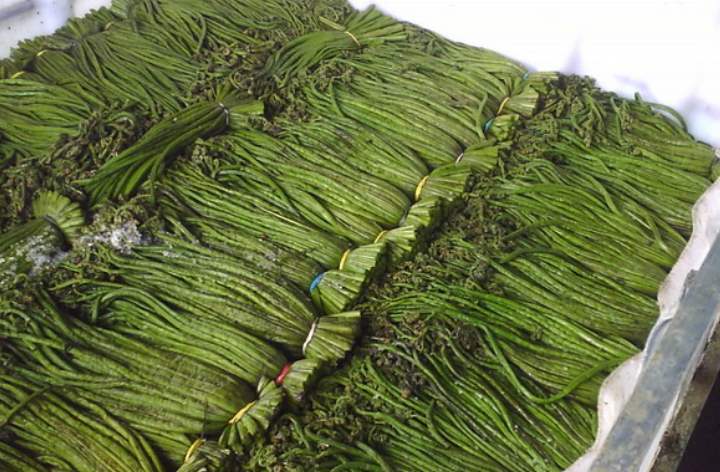

In Switzerland, in the Middle Ages, the pharmacist and physician Nuffer compiled an antihelminthic recipe based on the fern. It was a secret lineup that became known only after the death of Nuffer.
No wonder the bracken is so popular. It stimulates metabolism, relieves stress, relieves pain, fever, increases efficiency and much more.
If a person has problems with the intestines and spleen, then fern shoots will help, thanks to their amino acids and tannins. You can cure a cough with an infusion of shoots and remove worms.
The roots, when taken orally, relieve joint problems, diarrhea and rickets. Tincture can be used to treat externally skin diseases, old wounds, scrofula, ulcers and eczema.
You can use the leaves as an anti-rotting solution for storing fruits and vegetables.
It is interesting that the bracken fritter repels insects, which was successfully used by peasants in Western Europe. In France, this plant was prepared and used for skin rejuvenation. To this day, waterproof glue is being prepared from brass.
Common bracken composition
- Catechins with anti-inflammatory and free radical neutralization. They noticeably stop age-related manifestations and remove toxins.
- Flavonoids that regulate the nervous system, strengthen blood vessels, regulate blood pressure and heart rate.
- Phytosterols, which regenerate the skin and support the female hormonal background.
- Fatty oils that have a beneficial effect on skin regeneration, relieve inflammation, protect the body from harmful effects.
- Bitterness to increase appetite, remove bile, strengthen immunity.
- Carotene, capable of removing toxins, preventing the development of cancer cells, normalizing metabolic processes in the body, and forming bone tissue.
- Riboflavin, which has a positive effect on the organs of vision and normalizes sleep.
- Tocopherol to stimulate the hormone estrogen, to protect against ultraviolet radiation, to relieve swelling, to slow down aging.
- Nicotinic acid, which provides the synthesis of hormones, has an analgesic effect, dilates blood vessels, improves blood flow, lowers cholesterol and lowers blood pressure.
- Glycosides that act to regulate the normal functioning of the heart, have a calming effect, neutralize microbes.
- Lignin, which fights salmonella and staphylococci, toxins and allergens.
- Tanin. This substance removes toxins and harmful substances, increases brain activity, improves digestion, strengthens blood vessels.
- Starch, which gives a person energy, stops the growth of tumor cells, and normalizes the intestines.
- Alkaloids that can relieve pain, accelerate blood clotting, lower blood pressure.
- Saponinov. They respond to the ha cough center and regulate metabolic processes in the body. They remove foci of inflammation.
- Yoda.
- Potassium.
- Manganese.
- Copper.
- Sodium.
- Calcium and some other substances that have a beneficial effect on humans.
Contraindications for use
Without a doctor, it is dangerous to be treated with a bracken, since the plant is poisonous. Absolute contraindications for use are:
- pregnancy;
- childhood;
- lactation period;
- individual intolerance.
In case of poisoning with bracken, the following symptoms may appear:
- - vomiting;
- - convulsions;
- - decrease in pressure;
- - violation of cardiac activity;
- - headache;
- - digestive problems;
- - disruption of the kidneys and liver;
- - dizziness.
Overdose can be fatal.
Bracken fern in cooking
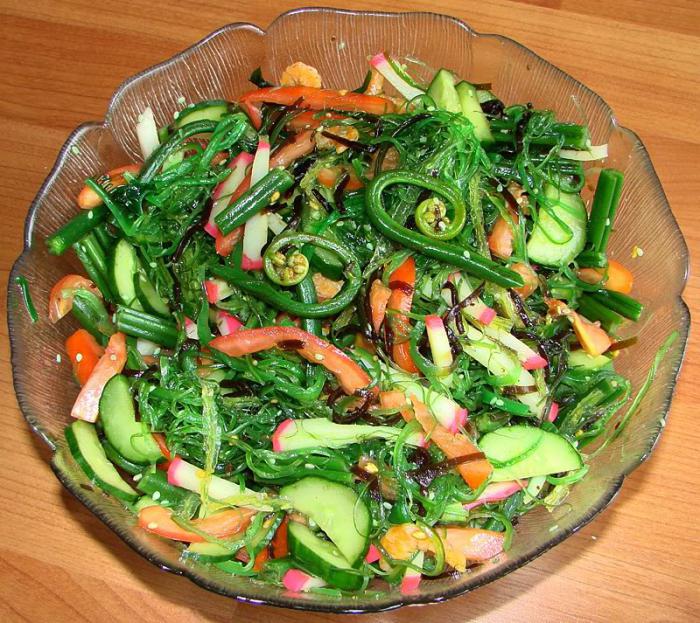

This plant is actively used by gourmet culinary specialists to prepare dishes with an original taste, and very useful ones. For this purpose, the common bracken rhizome and its young shoots are used.
Let's look at recipes for cooking bracken fern.
Egg salad
For this dish, you need to take the following ingredients:
- young fronds (leaves) of a fern - about 100 g;
- hard-boiled chicken eggs - 2 pieces;
- green onion;
- a couple of tablespoons of vegetable oil;
- salt to your own taste.
Vayi must be thoroughly washed and boiled, then chopped. Chop the onion and eggs very finely. Mix the ingredients well in a prepared container, add salt and season with vegetable oil.
Korean bracken fern salad with carrots
To prepare it, you will need the following products:
- two onions;
- canned corn (one third of the can);
- rye crackers;
- hard cheese;
- beef;
- Korean carrot;
- wai bracken.
For the sauce: 120 ml of sour cream, 30% fat, 30 ml of mayonnaise, a clove of garlic.
Beef and fern frond should be boiled well beforehand. Cut the onion into thin half rings and fry. Cut the cheese and boiled beef into strips. Finely chop the fronds. Mix all ingredients thoroughly in a large container, season with sauce.
Culinary experts note that the shoots of the above plant can be used to prepare side dishes.
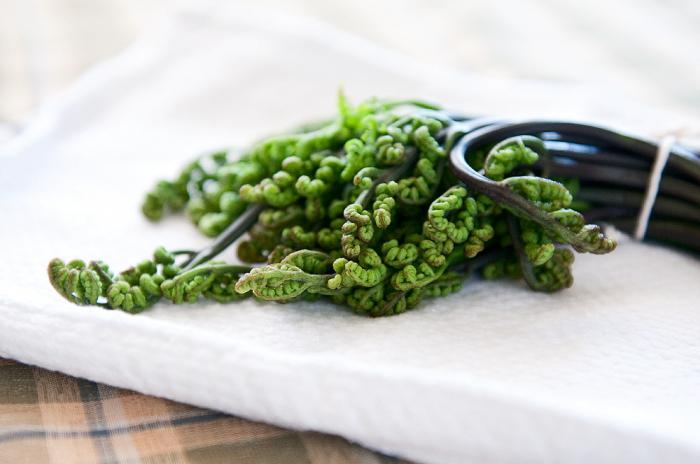

They go well to taste with peas, potatoes, cereals. But it is imperative that the common bracken be soaked well in water and boiled until tender (this is even before the main course is prepared). This is done in order to eliminate bitterness.
How to grow bracken outdoors - care rules
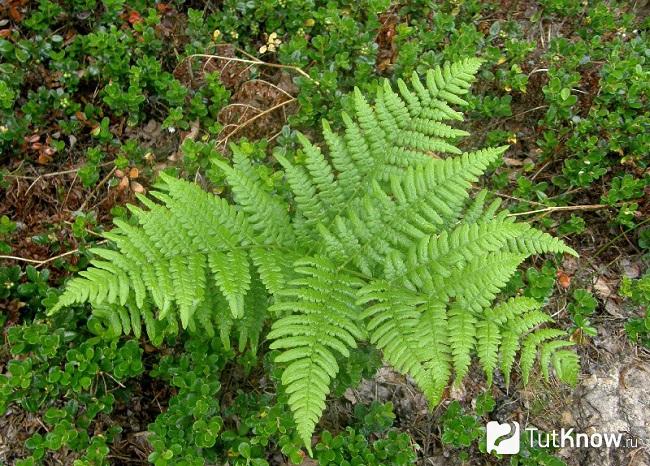

- Landing place
pteris in the garden should be chosen in accordance with his natural preferences - half-shaded or in full shade. A fern will grow well among trees, the crown of which will serve as protection from direct sunlight. It is recommended to select a place where the soil will be sufficiently moist, for example, on the banks of artificial or natural reservoirs. - Soil for bracken
should not be nutritious, a depleted and loose composition is suitable for a fern, since the root system requires a constant flow of air, but with sufficient moisture indicators. It is best that the acidity values are within the pH range of 5–6, that is, the substrate needs a slightly acidic one. - Eagle planting
carried out during the period when the frosts have already passed, and the soil warms up enough, from about mid-spring. An indication that the plant is ready for planting will be fronds in full bloom. Planting is done with an earthen clod so that the root system is not accidentally injured. The planting hole should be slightly larger than an earthen lump. You should not bury the seedling much into the ground, otherwise it may die. After the plant is placed in the planting hole, prepared soil is poured around and abundant watering is performed. It can be noted that it is difficult to take root pteris, but with proper care it can begin to grow, pleasing the eye with the arrival of a new season with openwork foliage. If several plants are planted next to each other, then about 0.5 meters are left between them, so that when they grow, they do not interfere with each other. Since the bracken will melt with the property of aggressively seizing territory, then you need to immediately take care of the restriction beyond which its rhizomes will not spread. To do this, when planting, it is recommended to use roofing material or geotextiles as limiters. Some gardeners simply plant the fern in large iron buckets with no bottom. You can use other materials that can stop the movement of root processes. If the bracken roots were dug in the forest, then it is worth grabbing some of the same soil in which the fern grew. When planting, this composition is poured into the hole. This will help the plant adapt faster. After planting, you need to mulch the soil under the bush. For this, you can use coniferous needles. Such a layer will protect the soil from rapid drying out and will allow it to remain loose for longer. Also, a layer of coniferous mulch will help maintain the acidity of the substrate, which will strengthen the pteris rhizome. - Watering
when caring for a bracken in the open field, it must provide constant humidity, therefore, humidification is performed regularly, abundantly and often. But it is important not to bring the substrate to acidification and flooding, otherwise the root system may begin to rot. - Fertilizers
for pteris, they are introduced together with water, which is poured over the fern. So feeding is recommended to be given only 2-3 times during the growing season. These drugs can be Absolut, Stimovit or Biopon. Some gardeners use organic or complete mineral complexes that include nitrogen. But with such fertilizers, you should be careful, as you need to remember that the fern mainly grows naturally on poor soil. - General care tips
... It is recommended to periodically remove those fronds that have aged, dried out or broken. This operation will not only give the fern more decorative outlines, but also stimulate the appearance of young shoots. In the spring, you can renew the mulch layer. - The use of bracken in landscape design.
If there are places on the site where the shading is too much or you need to fill the area between the trees, then such a fern will look good there. You can also plant in rockeries and rock gardens provided with shading to fill the voids between the stones. Pines or birches will be good neighbors, then the bracken can serve as a ground cover crop. If there is a slope with partial shading on the site, then the fern will complete the picture with its openwork leaves. The plant is also beautiful in the autumn, when fronds take a light brown or bronze color. Of the flowers, pteris will look good next to tall lilies and arrowheads. In rock gardens, it will be set off by such a creeping culture as periwinkle.
Bracken fern in medicine
Alternative medicine uses the above plant to treat many diseases and ailments. It:
- cough;
- joint pain;
- scrofula;
- diathesis;
- diarrhea;
- helminthic invasion;
- stomach pain;
- polyarthritis;
- convulsions;
- ulcers;
- arthritis;
- leukemia;
- hemorrhoids;
- radiculitis;
- rheumatism;
- radiation sickness;
- dry pleurisy;
- jaundice;
- bronchitis;
- noise in ears;
- cold.
Reproduction methods
The bracken is propagated by spores or dividing the bush. To collect spores, you need to cut off a leaf with sori in September, dry it and scrape the spores onto a sheet of paper with a spoon. After drying, the seed is folded into a paper bag and stored until winter. In January, boxes with peat soil are prepared. The soil is moistened, and then small seeds are poured onto the surface. The pot is covered with glass and placed in a warm, bright room. The crops should be ventilated and sprayed daily. After 8 weeks, the surface of the soil will be covered with green moss. The shelter can now be removed so that oxygen is better supplied to the seedlings. The grown seedlings are transplanted into separate small pots. In April-May, the bracken is ready to be transplanted into open ground.
Dividing a bush is considered an easier and more effective way of propagation. An adult fern has a developed rhizome, which quickly recovers after pruning and transplanting. In the middle of spring, when regular frosts are in the past, the bracken rhizome should be dug up. It is divided into sections with 1-2 buds. Delenki are treated in places of cut with crushed charcoal and immediately planted in moist soil. In the natural environment, any part of the rhizome during digging is capable of sprouting, therefore, the bracken in agriculture is considered a hard-to-eradicate weed. This genus of fern cannot be propagated using cuttings.
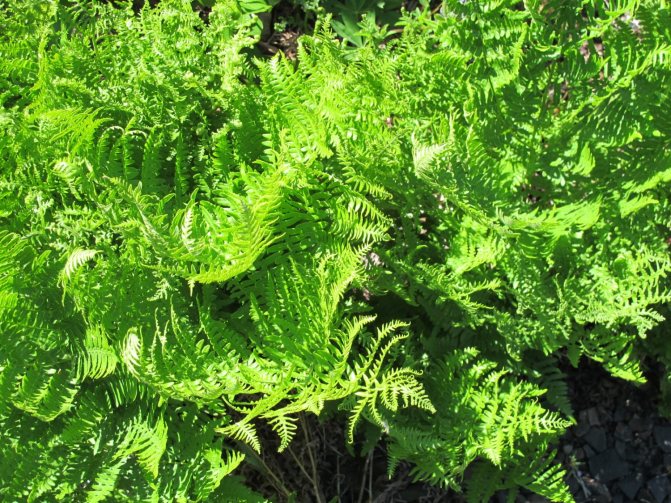

How does bracken fern reproduce?
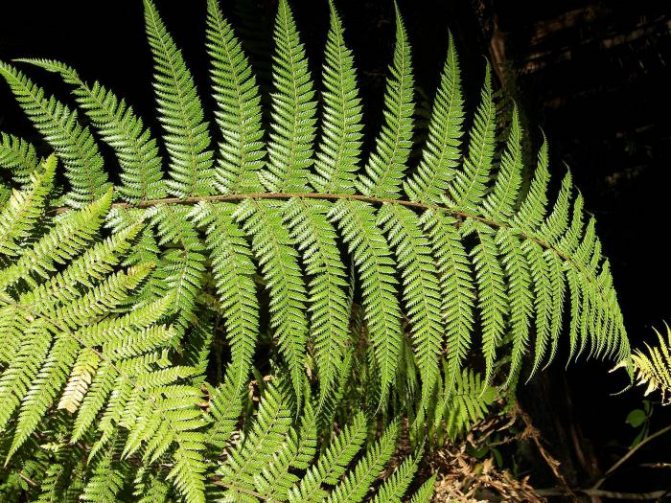

This plant reproduces vegetatively or through spores. The vegetative method of reproduction involves the use of thin cordlike rhizomes that are at a sufficient depth. It is thanks to this method that the bracken fern easily takes root in difficult places: in abandoned fields, fires, pastures.
Reproduction by segments of the rhizome of the above plant can be carried out both in early spring and at the end of summer.
From July to September, the common bracken usually reproduces with the help of spores. The wind carries them to different distances.
The above plant is not suitable for indoor cultivation. It can be cultivated, for example, in the garden.
The use of bracken - features of the workpiece
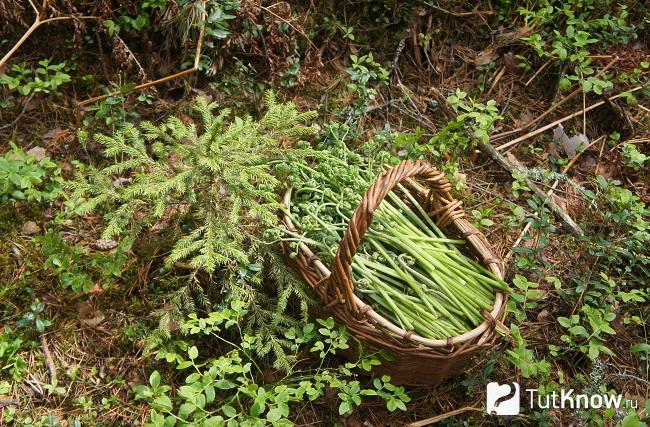

Since it is customary among the people to harvest fern shoots, we will consider how to do this. The best time to collect young stems is mid-spring, but this period may differ slightly in different regions, so the collection is usually carried out when the bird cherry petals begin to crumble and the lilies of the valley bloom. If, when trying to disrupt the eagle's shoot, it easily breaks off, then the time for collection has come. When the stems begin to bend easily, then collecting them is no longer worth it. The length, which should be optimal when collecting shoots, is in the range of 20-25 cm, their thickness is 5-15 cm. The cut is made at the base, and then they are collected in bunches.
Important!
It is not recommended to cut the entire bracken bush, so that later it can continue to develop normally.
If processing is not carried out after cutting for 3-12 hours, then even cut shoots are exposed to lignification. Often, young stems are used for pickling and then ready to eat. Drying can be done outdoors for a day or two. After processing, such shoots are suitable for consumption throughout the year. When a fern rhizome is harvested for medical purposes, its properties are preserved for several years.
Usually, for salting bracken stalks, tubs are used, in which bundles are laid in layers. Before each new layer, sprinkle with coarse table salt. In general, the weight of all salt used should be 1/4 of the total weight of the shoots. On top of all layers, oppression is placed and so it is kept for 14–20 days. When the specified period expires, the oppression is removed, and the brine is drained.The second stage will be laying the top layers on the bottom of the container and filling them with brine. This time, salt is required to take 5 times less than the resulting mass of shoots. The oppression is again laid on top, and the exposure time will be a week.
Before using salted pteris shoots, they must be soaked in fresh water for 7 hours. Then boil for 5 minutes. Done! The fern shoots are now edible.
Bracken Fern Care
The above plant is not overly whimsical. It easily tolerates a lack of moisture, is resistant to dry soils. The main advantage of the common bracken, by the way, like all ferns, is its ability to grow rapidly.
In no case is it recommended to feed the plant (especially with manure). The common bracken easily tolerates even very low temperatures, does not have pests, and is not affected by diseases. If a very dry summer is observed in the region, then its leaves may turn slightly yellow.
Orlyak ordinary - an excellent option for decorating a garden. In addition, the medicinal properties of the plant can be actively used to prepare agents for the treatment of various diseases (only with prior consultation with a specialist, of course). And in cooking it is quite possible to use it.
Curious notes about the eagle
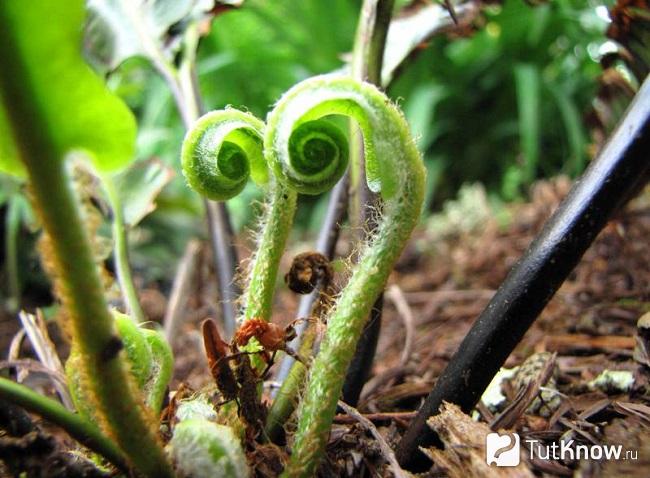

As for many plants from this family, the time of appearance on the planet of this fern is approximately 55 million years ago. Bracken is one of those ancient plants, namely lichens, that have been able to survive from ancient times to our time and have practically not changed their shape.
The plant has long been appreciated by humans because of the substances that make up its composition. Scientists have identified not only vitamins (C, E and group B), but also flavonoids, saponins and starch, contains proteins and tannin, glycosides and many useful trace elements, including iron, iodine, manganese, calcium and others.
It is noted that it is the young shoots of the bracken that are overflowing with the most useful components. When the fern grows in size and the spores mature, cyanides and hydrocyanic acid take their place.
Due to the abundance of nutrients, folk healers also appreciated the bracken. Dried fern shoots serve as the basis for the manufacture of decoctions and are used to treat diarrhea and vomiting, headaches and colds. Such drugs help to relieve nervous disorders and manifestations of hypertension, have anthelmintic properties and help with weakened immunity.
Several centuries ago, European healers used bracken to cure rheumatism and arthritis, and eliminate convulsions. Revealed its ability to stimulate the body, choleretic and expectorant properties. If you eat young shoots, they remove radionuclides from the body, relieve stress and help them resist, increase the regeneration of human tissues and normalize metabolism.
But at the same time, as usual, there are contraindications for the use of such drugs, since the shoots can carry a small fraction of the poison that can accumulate in the body. These are considered:
- childhood;
- pregnancy and the period of breastfeeding;
- hypotension;
- individual intolerance.
However, one should remember the symptoms of eagle poisoning: severe dizziness, vomiting and nausea, manifestation of allergic reactions, problems in the functioning of the liver and kidneys.
In cooking, this fern stands alongside complete foods that are used in food. If there are bracken landings on the site, then you can start harvesting it for future use. If the year was bad, then such supplies helped, since they served as a substitute for bread. If you pickle young shoots, then their taste resembles mushrooms, but to some they are somewhat similar to asparagus.
Important!!!
Do not eat raw bracken shoots. Salting of young stems, decoction or soaking is carried out. Only after that can you fearlessly eat them.
On the territory of Japan, they learned not only to salt bracken, but also to prepare sweets, pies and rare gourmet products from it. In other countries, it is customary to mix crushed fern stalks with flour when baking baked goods, as well as add to salads, add to seafood dishes, and make sauces. If vegetables are shifted with foliage, then in winter the fern will save supplies from decay.
Botanical description and birthplace of the plant
The oldest plants on our planet are ferns; they have existed for over 400 million years. In the taxonomy of vegetation, they occupy a larger niche than the class - a whole department with 300 genera. In turn, the largest is the bracken genus. Of course, the appearance of modern representatives of this genus has been modified, but the presence of spores and fronds remained unchanged.
Where grows
Common bracken (lat.Pteridium aquilínum) is found in Russia and the CIS. In fact, he is a cosmopolitan: in nature, bracken thickets live in all corners of the planet, excluding the Arctic and deserts. Grows on depleted and dry soils. It mainly lives among thickets of shrubs in deciduous and coniferous forests, often goes beyond their limits, filling glades and clearings. In mountainous areas, they rise above the forest belt.
Common bracken is a herbaceous fern with a maximum height of 1.5 m, but basically "growth" ranges from 30-100 cm.
All members of the genus have a powerful, highly branching root system, consisting of horizontally and vertically located segments. They go underground to a depth of 1.5 m, thanks to which they do not freeze out, are not afraid of drought and survive in forest fires. Leaves emerge from the lateral buds. Dense thickets form quickly, actively developing vast territories, the fern behaves aggressively towards other plants, in some countries the bracken is recognized as a weed.
Bracken fern signs
On the stem, the fronds are arranged alternately, attached with elongated fleshy petioles and placed parallel to the soil surface. The outlines of the leaf plate are triangular, it reaches 50 cm in length, and 30-50 cm in width. At the base, separate leaves, double- or triple-pinned, are dissected along the entire length. As they approach the apex, they are mostly solid with blunt-pointed curved tips. All leaves are oval and have a tart aroma. The lower pair is supplied with nectaries, the sweetish liquid secreted attracts ants.
Sori are located along the edges of the back of each leaf, but sporangia does not develop annually. Attached to the vascular gravity, they connect the veins. Sporangia are covered with a thin film and few villi. Spore seeds ripen during July-August.
On the transverse section of the fleshy root, bundles of veins are visible. Outwardly, the silhouette resembles a semblance of a state eagle, hence the name of the genus. To some, the bundles of vessels resemble the initials of Jesus Christ, due to which the plant is also called the Jesus grass. Among our people, fern is also called kotochizhnik, vitriol, flea beetle, heat-color, perun fireflower.
Varieties of Eagle
To date, there are 4 main varieties of common bracken, which are found in different parts of the planet:
- common bracken - pteridium aquilinum var. feei (W. Schaffn. exFée) Maxon;
- pteridium aquilinum var. lanuginosum (Bong.) Fernald;
- pteridium aquilinum var. latiusculum (Desf.) Under. Ex A. Heller;
- pteridium latiusculum (Desf.) Hieron. Ex R.E.Fr. It is found in China, Japan, Taiwan, in the north of Europe, almost everywhere in Canada and the USA, in the north of Mexico;
- pteridium aquilinum var. pseudocaudatum (Clute) A. Heller.

